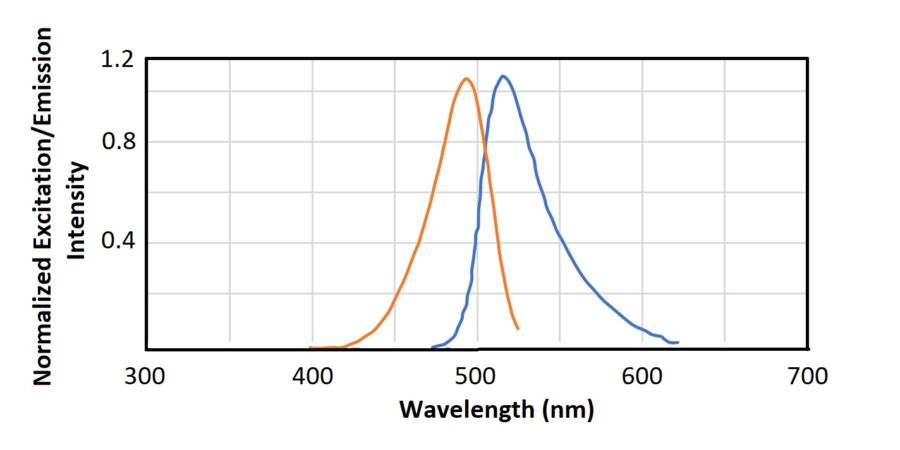Storage and stability
Store at 0-8 ˚C in a tightly closed container when not in use. It is stable under recommended storage conditions.
Solubility
It is soluble in DMSO and DMF.
Applications
It is commonly used for labeling antibodies2 (IgG) and other immunological applications. It is also often used in flow cytometry, a technology frequently used by biologists to study cellular populations with high precision3.
The labeling of dextran with fluorescein via its Fluorescein isothiocyanate derivative was first described in a publication in 1973 by de Belder and Granath4. Now it is a long-established method for obtaining fluorescently labelled polysaccharides. Functionalized polysaccharides such as FITC-dextrans are very useful for studying permeability and transport in a large variety of cells and tissues. This includes the intestinal5, neoplastic6– and ocular7 tissue as well as in research related to brain and neural system8. FITC-dextran and other FITC-conjugated polysaccharides can also be used to study microcirculation, which can be described as the smallest circulation of blood in the microvessels. These are present within all organ tissues. FITC-dextrans have been used in studies of leukocyte adhesion, macromolecular leakage (see Figure 3), and the leakage of microcirculation during ischemia/reperfusion 9. FITC-dextrans have also been used to study the intestinal mucosal microcirculation10.






